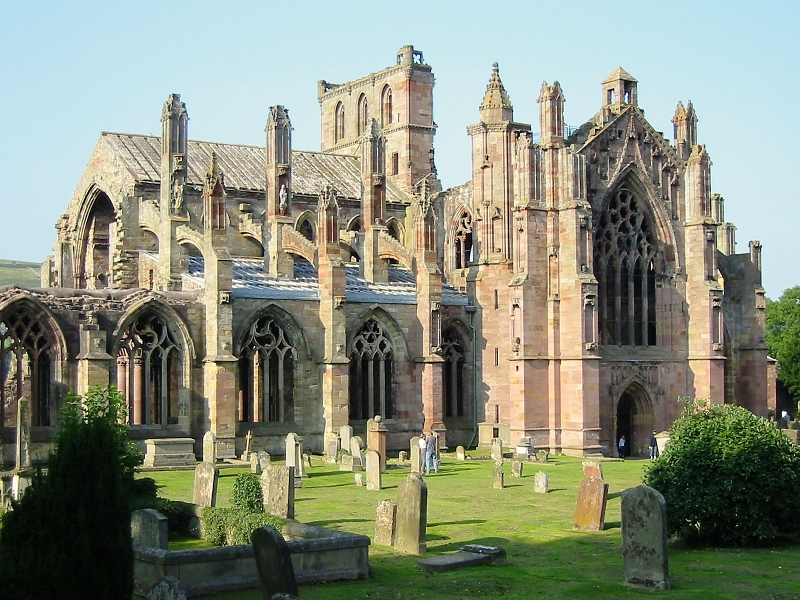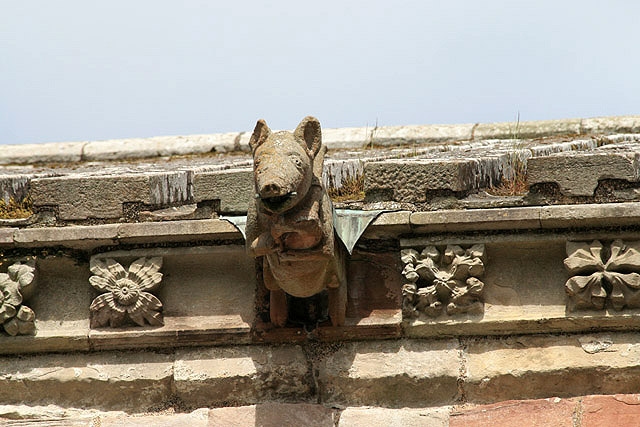
I approach Melrose Abbey with a single-minded mission – to find the famous bagpipe-playing pig somewhere on this magnificently carved structure. Making a complete circuit around the transepts, presbytery, church and nave, I am astonished at the many countenances who look down on me from soaring heights.
In my prior research, I'd read that there were many faces carved on the walls at Melrose, but I was unprepared for the number. Human emotion has been captured timelessly in these carvings and the many expressions that seem to gaze back at me range a full spectrum: belligerent, winsome, pious, pensive, bereft, demure, indignant.
I snap an entire roll of film as I meander around the ruins, whispering "Here pig, pig, pig" under my breath. I still haven't found it on my second circuit, and meet Robin and Dana coming from the other direction.
"Find it?" Robin asks, looking up, studying the edifice as she walks toward me. "Nope," I respond, looking up, eyes searching arches and overhangs as I walk toward her. "There it is!" we call out in unison.
It's way up high – near the top, and I am frustrated by the limitations of my new camera as I attempt to zoom in. I snap my picture anyway, accepting that a pig-postcard will be my first purchase of the day. Goal realized, I can retrace my steps and truly explore the extensive ruins.
Of the nine Cistercian houses in Scotland, Melrose was the first. It was founded in 1136 by David I, as an invitation to the brethren at Rievaulx in Yorkshire to establish a settlement in Scotland. Thirteen monks arrived from Rievaulx – Abbot Richard and twelve others, signifying Christ and his disciples – and began the building of their new abbey. By 1146 the church was sufficiently complete to be dedicated to the Virgin Mary.

Melrose Abbey is laid out on a traditional east-west access. The west section is almost wholly absent other than its foundations. The eastern section is more intact. The northern cloisters are equally erased to foundation level.
The abbey is the only Scottish abbey to still retain some of its original floor tiles.
A graveyard serving the local community lies to the south and south-east of the abbey. The majority of stones date from the 19th century.
Read more about Melrose Abbey on Wikipedia.